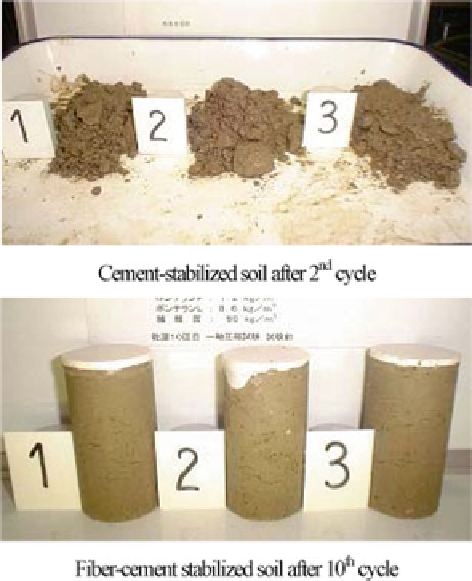Environmental Engineering Reference
In-Depth Information
Fig. 10.6
Condition after
completion of drying and
wetting cyclic tests (initial
water content 105 %, cement
stabilizer supplement 100 kg/
m
3
)
2003
). The fiber-solidified soil contains the fiber inside the soil so is considered to
have good dynamic strength. Thus if such strong reinforced materials are used, it
can provide an earthquake-resistant base material to repair suitable areas. So, using
cyclic triaxial compression tests, we considered the dynamic strength of the fiber-
solidified soils.
In Fig.
10.7
are the results of cyclic triaxial compression test on fiber-solidified
mountain sandy soils (Takahashi et al.
2008
). The horizontal axis is the elapsed time
from the start of the test, and the vertical axis indicates excess pore water pressure.
Where excess pore water pressure increases this makes liquefaction easy and dy-
namic strength is low. Compared with the mountain soil, the solidified soil had large
dynamic strength, but the solidified soil containing fibers showed little increase in
excess pore water pressure, and exhibited greater dynamic strength when the fibers
were included. In other words, the fiber-solidified soils showed both good static and
dynamic strength and also superior stress- deformation characteristics, showing that
it is suitable for use as a seismic-resistant ground material. In the March 11, 2011
Great East Japan Earthquake, many areas suffered damage from ground liquefac-
tion. I would like to recommend that fiber-solidified soil be used in the earthquake
resistance and disaster recovery construction.

